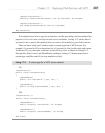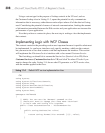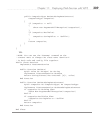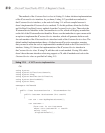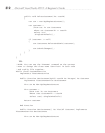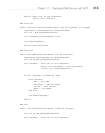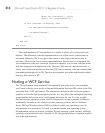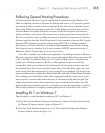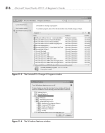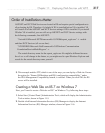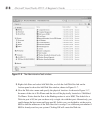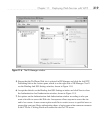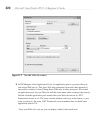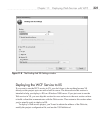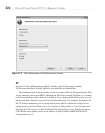
Chapter 11: Deploying Web Services with WCF 315
Following General Hosting Procedures
For better security, IIS doesn’t install with the default installation of the Windows OS.
There are different versions of Windows for desktop and server, so I’ll provide a general
description of what you need to do for installing IIS. The first step is to find the Control
Panel in the Windows Operating System (OS). Older Windows versions have a link for
Add And Remove Programs, but newer versions call the link Programs And Features,
which you need to open. Server OS versions have a control panel you can use to install
IIS. Next, search for a link for adding and removing Windows Components (or Windows
Features) and click that link. Find IIS and install it and remember to turn on File T
ransfer
Protocol (FTP) support if you want to deploy using FTP. FTP is an Internet protocol
that allows you to work with files; it is useful in deployment because it allows moving
files from one server to another. You’ll need to enable ASP.NET on newer versions of
Windows, which I’ll explain how to do in a later section.
Once IIS is installed, you can host your application. On desktop versions of W
indows,
IIS 6 only supports a single Web site, but you can add multiple Web sites to any server OS
or IIS 7 and later. To create the Web site, you’ll need to either create a virtual directory
(in the case of desktop versions of IIS 6) or a Web application. You can do this by
opening IIS, which you can find via the Administrative Tools menu; you can often find
the Administrative Tools menu from the Control Panel. Find Web Sites, right-click, and
select Create New Web Application. If you’re using IIS 6 on a desktop, you’ll need to go
down an additional level, right-click Default Web Site, and select Create Virtual Directory.
Don’t change any of the default values while stepping through the wizard, but you will
need to specify a name for the virtual directory or site name and the physical path. The
virtual directory/site name is the location that a user would add to the address bar.
The
physical path is the location in your file system that you want the application to reside in.
This location defaults to c:\inetpub, assuming that your OS is deployed to the c: drive.
Installing IIS 7 on Windows 7
The following is a walk-through for setting up IIS 7 on Windows 7.
1. Select Start | Control Panel | Programs And Features, which will display the Uninstall
Or Change A Program window, shown in Figure 11-3.
2. Click the “Turn Windows features on or off” link, which will display the Windows
Features window, shown in Figure 11-4.



